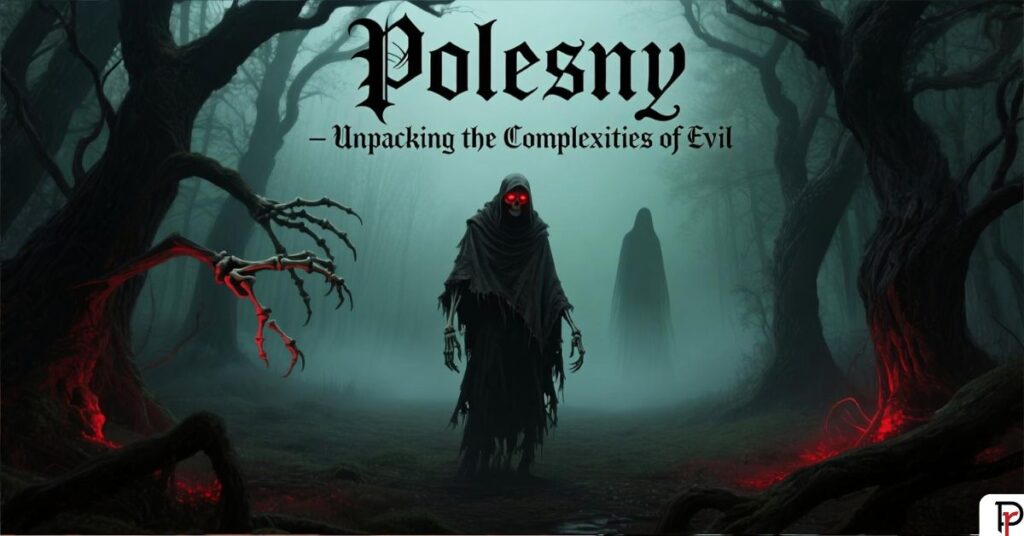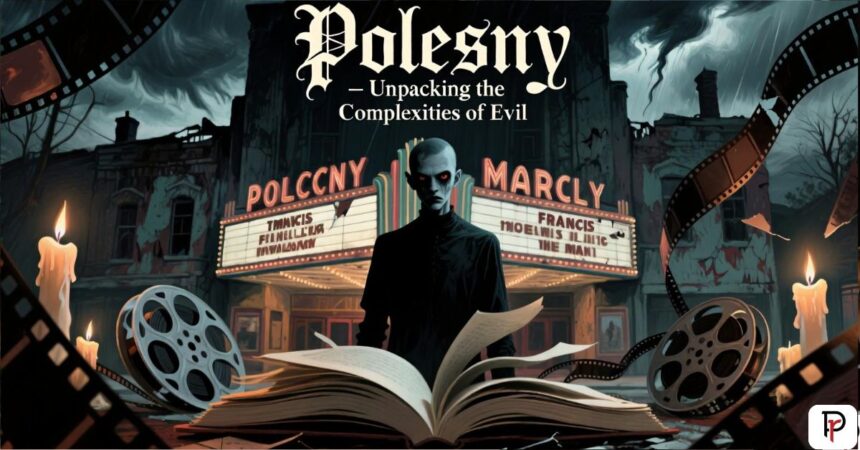Evil has long been a central theme in storytelling, shaping some of the most compelling narratives in human history. From ancient myths and Gothic novels to psychological thrillers and epic dramas, the depiction of evil reveals much about the cultural, moral, and psychological fabric of societies. Few have analyzed this topic as deeply as Polesny, whose exploration of evil in film and literature offers profound insights into the ways evil functions as a narrative force.
This blog takes a comprehensive look at evil as portrayed in literature and cinema, guided by Polesny’s principles. We will explore how evil shapes plots, defines characters, and challenges audiences to confront their own moral beliefs.

Understanding Evil in Storytelling
Evil in storytelling often represents chaos, destruction, or moral corruption. It is presented in various forms, from abstract ideas to fully realized characters. Depictions of evil serve several purposes, such as creating dramatic tension, contrasting good and evil, or reflecting real-world moral dilemmas.
For instance, in literature, the character of Macbeth in Shakespeare’s tragedy of the same name embodies ambition and moral decay, while George Orwell’s 1984 uses an authoritarian government to symbolize societal evil. Conversely, film might explore evil visually and viscerally—consider the haunting portrayal of Hannibal Lecter in The Silence of the Lambs.
Polesny framed evil as a dynamic and evolving element in narratives, arguing it not only propels the plot forward but also mirrors the complexities of human nature.
Psychological and Philosophical Dimensions
Polesny approaches evil not merely as an external conflict but as an internal struggle. His analysis emphasizes the dualities within human beings, such as morality and immorality, light and darkness. This is particularly evident in characters like Anakin Skywalker in Star Wars, whose transformation into Darth Vader illustrates the internal battle between good intentions and destructive actions.
Polesny’s Approach to Evil in Film and Literature
Polesny’s work unpacks the layers of evil as presented in both films and literary works. He acknowledges the dichotomy of overt evil (manifested as villains or wicked forces) and latent evil, which lurks within seemingly good characters or societal structures.
According to Polesny, literary evil often relies on symbolic interpretations, offering readers a broader canvas to explore inner truths. Films, on the other hand, can utilize visual and auditory elements like lighting, camera angles, and background scores to make evil feel immediate and tangible.
| Medium | Strength in Portraying Evil |
| Literature | Allows for deep internal monologues, allegories, and symbolism. |
| Film | Evokes visceral reactions through visual effects, sound design, and acting. |
Polesny’s framework for analyzing evil is particularly useful in discussing adaptations of literary works into films, such as how Vladimir Nabokov’s Lolita transforms into visually uncomfortable moments in Stanley Kubrick’s 1962 adaptation.

Evil in Film
Film often uses evil as a spectacle, relying on sensory inputs to evoke fear, tension, or unease. Directors employ techniques like shadows, close-up shots, and soundscapes to evoke a visceral experience.
Some iconic examples include:
- Hannibal Lecter in *The Silence of the Lambs* – A charming yet cannibalistic villain that embodies psychological terror.
- The Joker in *The Dark Knight* – Chaos incarnate, with a complex personality driven by anarchy.
- Anton Chigurh in *No Country for Old Men* – A hauntingly calm executioner whose morality is tied only to a coin toss.
Evil in film is often amplified by the audience’s inability to influence events—they are passive observers, watching the chaos unfold. Polesny highlights how this helplessness contributes to the lasting impact of evil characters in cinema.
Techniques for Portraying Evil in Film
- Lighting – Shadows can symbolize darkness or moral ambiguity (The Godfather).
- Music – Ominous tones intensify scenes of conflict or dread (Jaws).
- Character Archetypes – Stereotypical villains or antiheroes challenge audience sympathies (Joker).
Evil in Literature
Literature’s strength lies in its narrative depth. Through detailed descriptions and inner dialogues, authors can craft intricate explorations of evil. Examples include Herman Melville’s Moby-Dick, where the whale symbolizes an untouchable, almost divine source of evil, or William Golding’s Lord of the Flies, where societal collapse triggers moral corruption.
- Moral Ambiguity – Many literary villains are sympathetic, complicating the line between good and evil (e.g., Heathcliff in Wuthering Heights).
- Symbolism – Evil is represented through objects, characters, or settings (e.g., the degraded painting in Oscar Wilde’s The Picture of Dorian Gray).
Polesny believed that literature’s ability to guide readers through complex internal landscapes makes it unparalleled in exploring the moral gray zones where evil exists.
ALSO READ THIS POST: Everything You Need to Know About Being a Film Industry Runner
Film Versus Literature
While both film and literature offer unique approaches to portraying evil, the two mediums also share overlapping strengths. Adaptations of literary works into films offer a chance to analyze these differences. For example:
| Aspect | Literary Approach | Filmic Approach |
| Character Study | Detailed monologues reveal inner conflicts. | Reliance on non-verbal acting and visuals. |
| Ambiguity | Symbolism and open endings provoke thought. | Subtle acting leaves ambiguity. |
| Immersion | Time to process complex plots and themes. | Emotional intensity delivered visually. |
Psychology and Audience Engagement
Audiences are key players in how evil resonates in narratives. The ambiguity of certain characters forces viewers or readers to ask themselves uncomfortable moral questions—if I were in this scenario, what would I do?
Take Polesny’s discussion of Breaking Bad. Walter White begins as a sympathetic character but evolves into a figure of moral and legal transgression. The show’s genius lies in keeping viewers emotionally invested in Walter’s fate, despite his descent into evil.
FAQs
How does Polesny define evil in storytelling?
Polesny defines evil as a narrative force used to explore moral, psychological, and cultural conflicts in both literature and cinema.
What makes film and literature effective in portraying evil?
Literature allows for deep psychological dives through internal monologues, while film uses sensory tools like visuals and sounds for immediate emotional effect.
Which characters embody Polesny’s idea of complex evil?
Characters like Walter White (Breaking Bad), Hannibal Lecter (The Silence of the Lambs), and Heathcliff (Wuthering Heights) showcase the layers of moral ambiguity Polesny often explores.
What are examples of subtle evil in stories?
Stories like 1984 and The Great Gatsby reveal evil through systemic oppression or personal obsession, rather than outright villainy.
How can audiences analyze evil in film and literature personally?
Reflect on the moral dilemmas characters face, question their motivations, and consider how the portrayal resonates with real-world issues.
Final Thoughts
Exploring evil in film and literature is more than an academic exercise; it’s a mirror that reflects the complexities of human morality. Through Polesny’s lens, we gain a deeper appreciation for how these narratives challenge, provoke, and inspire us to confront the darkness within and around us.
